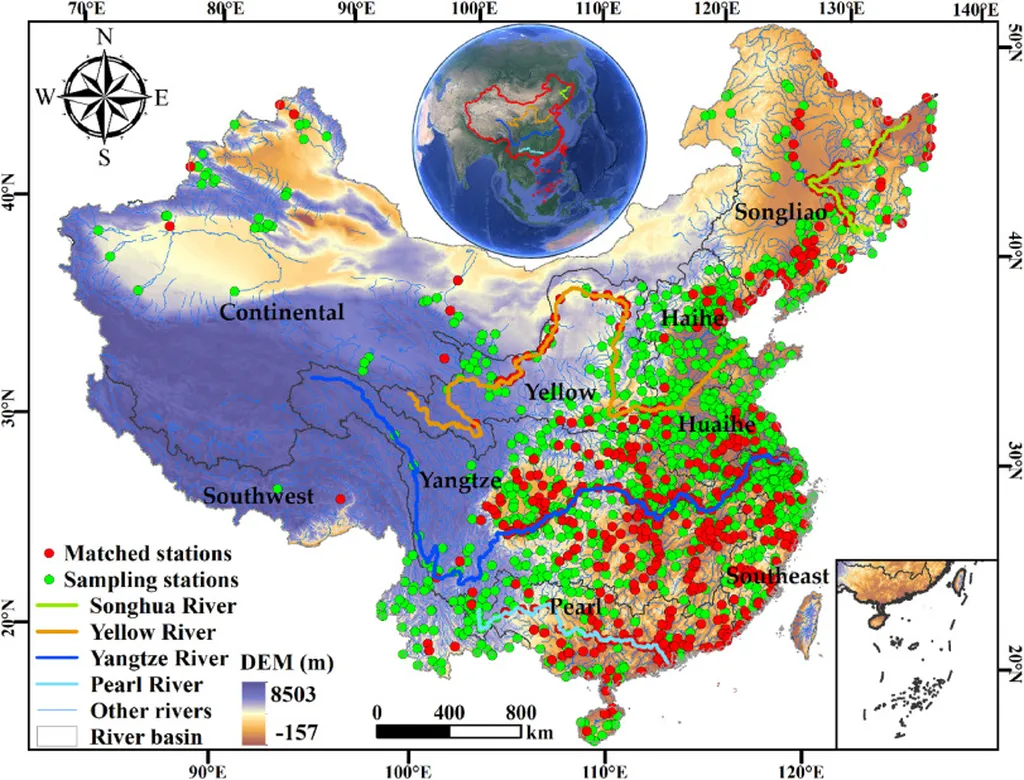In the heart of China’s Guangdong-Hong Kong-Macao Greater Bay Area, the Dongjiang River Basin (DRB) serves as a lifeline, supplying water to millions and supporting a thriving ecosystem. Ensuring the water quality of this vital resource is paramount, and a recent study led by Junying Yang from the School of Geography and Planning at Sun Yat-sen University, along with the Southern Marine Science and Engineering Guangdong Laboratory in Zhuhai, has shed new light on the matter. Published in the IEEE Journal of Selected Topics in Applied Earth Observations and Remote Sensing, the research leverages cutting-edge technology to monitor and analyze the potassium permanganate index (CODMn), a critical indicator of water quality.
Traditional methods of monitoring CODMn have long posed challenges, particularly in inland waters, making it difficult to capture the full spatiotemporal dynamics of water quality. Yang and her team addressed this issue by harnessing the power of Sentinel-2 satellite imagery and machine learning models. “We utilized multiband data from Sentinel-2 imagery and water body type information to construct remote sensing retrieval models for CODMn in the DRB,” Yang explained. The team’s innovative approach yielded impressive results, with the optimal retrieval model demonstrating significant accuracy, boasting an R2 of 0.71, an RMSE of 0.8 mg/L, and a MAPE of 23.28%.
The study’s findings reveal a complex interplay of factors influencing water quality in the DRB. High-resolution spatiotemporal distribution products of CODMn from 2017 to 2024 indicate that certain segments of the midstream and the delta exhibit higher CODMn levels. These variations are closely linked to agricultural activities in the midstream and industrial wastewater discharge in the delta. Temporally, the CODMn levels in most areas of the DRB reach their lowest values in winter, a unique characteristic that sets the DRB apart from other basins.
The implications of this research extend far beyond academic interest. For the energy sector, which relies heavily on water for various processes, understanding and predicting water quality trends is crucial. Accurate monitoring can help energy companies optimize their water usage, reduce treatment costs, and minimize environmental impact. “Our findings provide a theoretical foundation and data support for the scientific management and protection of the DRB,” Yang noted. This data-driven approach can guide region-specific management strategies, ensuring sustainable development and ecological security.
The study highlights the significant application value of machine learning methods and water body type attributes in improving CODMn remote sensing retrieval. As Yang and her team continue to refine their models, the potential for real-time, high-resolution water quality monitoring becomes increasingly feasible. This could revolutionize how industries, including energy, approach water management, leading to more efficient and environmentally friendly practices.
In an era where data is king, this research stands as a testament to the power of advanced technologies in addressing real-world challenges. By providing a clearer picture of water quality dynamics in the DRB, Yang and her team have paved the way for more informed decision-making and sustainable development. As the energy sector continues to evolve, the insights gained from this study will undoubtedly play a pivotal role in shaping future strategies and policies.

